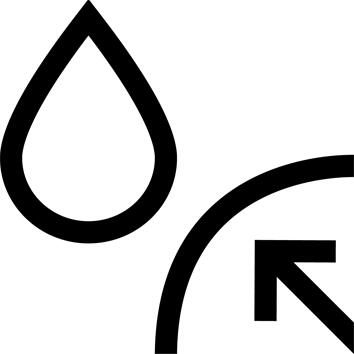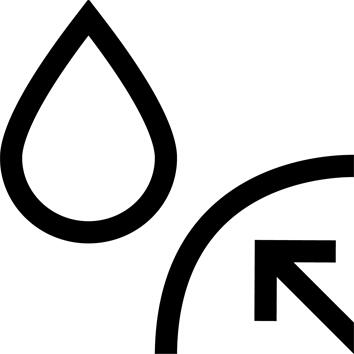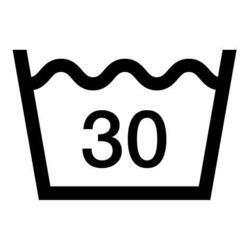Waterproofing 1/2
A fabric's resistance to water pressure is measured in mm water column (JIS standard). The higher the pressure, the more waterproof the fabric.
Here are the waterproof values:
Component resistant to a water pressure of 5,000mm after aging (5 washes). This is equivalent to 5,000 Schmerber (JIS standard) - the average pressure exerted by water during a downpour.
The jacket's water resistance was tested under a rainfall of 60 liters of water/m²/hour for 2 hours.
Waterproofing 2/2 - Technical specifications of the 300 jacket
- Water-repellent coated fabric (water runs off the fabric)
- 100% taped seams
- Jacket hem adjustable with elasticated drawcord
- Sleeve cuffs adjustable with hook-and-loop fasteners.
- Zipper protected by inner underflap and outer flap for improved waterproofing
- Collar height (back) 11.5 cm
- Injected plastic zipper to prevent salt oxidation.
Hood
The hood is stored in the collar. The collar is then closed by an injected plastic zipper to prevent salt oxidation.
Hood fully adjustable in height and depth: adjustment at the back of the hood and at the neckline
Visor with headband to provide a good level of protection and better support.
The high collar, rising to the chin, effectively protects the lower face.
Pockets
2 pockets on the front of the jacket, to hold VHF, raban, cap... Injected plastic zipper to prevent salt oxidation
1 inside pocket on right breast for phone or other items, zippered
ATTENTION: pockets are NOT WATERPROOF.
Front zipper
Full-length zip with inner gutter (under flap) for protection against wind and water. The outer flap reinforces the protection, preventing water from entering through the zip and guaranteeing a higher level of waterproofing.
Soft fabric flap at the top of the collar to protect the chin.
Protection - sleeves
At the end of the sleeve is an adjustable Velcro sleeve. It allows you to adjust the sleeve to the length of your arm, but also to limit the entry of air and water.
To unfasten the jacket more easily, open the sleeve fully.
Component breathability
Pour savoir si un tissu est respirant, on mesure sa résistance évaporative RET (norme ISO 11092). Plus la résistance est faible, plus le tissu laisse s’échapper la vapeur d'eau et donc plus le tissu est respirant.
On considère que si :
RET < 9 = tissu très respirant
9 < RET < 12 = tissu respirant.
Le RET de la veste Sailing 300 est de 12.
Water-repellent information
A fabric's water repellency is its ability to let water slide off its surface without absorbing it.
This means your jacket won't become waterlogged, remaining light and breathable. Water repellency is achieved by a treatment applied to the outer face of the fabric, but in use these properties can be altered.
Water repellency can be reactivated by tumbling the jacket for 10 minutes at low temperature.
How do I wash my jacket?
To preserve water repellency, we recommend that you limit the number of washes.
Close all zips and flaps, empty the pockets and then turn the garment inside out to wash inside out. You can wash it on a synthetic program at 30° or 40°C with your usual detergent. Do not use fabric softener, which could damage the garment's original performance, or bleach. Very important: rinse thoroughly or use a double rinse.
How do you reactivate the water repellency of your jacket?
Drying is essential to reactivate the water-repellent treatment.
We recommend that you let your jacket dry completely in the open air, flat on a drying rack. Never dry your jacket directly on a radiator.
Then tumble dry on the synthetic program for a short time (10 to 15 minutes) before putting it back on. Be careful not to over-dry the garment.
Weight
M : 0.85 kg
L : 0.86 kg










